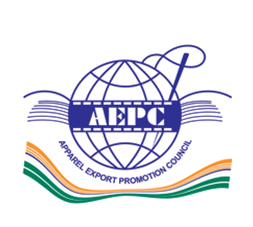 AEPC (Apparel Export Promotion Council) has strongly opposed the proposed amendment of Rs 10,000 as minimum payable wages to contract labour and said that if this is implemented then the industry will not be able to afford the existing level of employment and hence capacities and turnover will be affected. It is estimated that it could lead to a decline in export turnover of at least 10%, i.e. Rs 11,000 crore of exports in a year and a proportionate decline in employment.
AEPC (Apparel Export Promotion Council) has strongly opposed the proposed amendment of Rs 10,000 as minimum payable wages to contract labour and said that if this is implemented then the industry will not be able to afford the existing level of employment and hence capacities and turnover will be affected. It is estimated that it could lead to a decline in export turnover of at least 10%, i.e. Rs 11,000 crore of exports in a year and a proportionate decline in employment.
The Ministry of Labour recently proposed amendment of Contract Labour (Regulation and Abolition) Central Rules, 1971, rule 25, sub-rule (2), clause (iv) suggesting Rs 10,000 as minimum payable wages to contract labour has come as a shock to the apparel Industry. It is estimated that if this provision is uniformly implemented across all states, the result will be over 90% increase in wages in states like Odisha and Rajasthan and at least and over 30% for most of the other states.
Mr. HKL Magu, Vice Chairman, AEPC expressing his opinion on the proposed amendment pointed out that, “The industry witnesses peak time during Oct – Feb, while orders decline by around 30% in other seasons. With this increase, the industry will not be able to exercise this flexibility in engagement of labour to meet its peak time requirements and loose to its competitors in Bangladesh and China, who already have a cost advantage.”
For the apparel manufacturers, the increase will be around 26% more on account of PF (12%), ESI (4.75%) and Bonus (8.33%). Adding the service tax, the total incidence is 41%. Hence, the industry will effectively have to pay Rs 14,100 for a contract labour, an increase of over 100% for some states.
The industry needs to demonstrate wage parity for similar work. Hence this increase in wages of contract labour will either violate wage parity norm or lead to unrest in the industry. Also, wage is fixed as per the work performed and on the basis of skills. The suggestion for fixation of Rs 10,000 for contract workers is arbitrary and will create distortions.
The Indian apparel sector has recorded an export turnover of Rs 1,11,235.5 crore in 2015-16. It was the only sector recording 1% growth in exports, in spite of 15.99% decline in global merchandise exports. The sector’s socio-economic relevance is demonstrated by the fact that it provides employment to a large number of workforce from weaker sections, mainly women and that too with low skills. In fact, women comprise over 50% of the workforce. The apparel sector provides employment to over 45 million people directly and 60 million people indirectly.
There is already a Minimum Wage Act for the purpose of fixing minimum wages. Under this, there is a process of wage fixation. The Tripartite consultation and linking wage increase to WPI provides a scientific basis for increase. Industry is not aware of the process followed for this proposed increase. The same may be shared and the impact of the increase should be discussed with labour intensive industries like apparel.